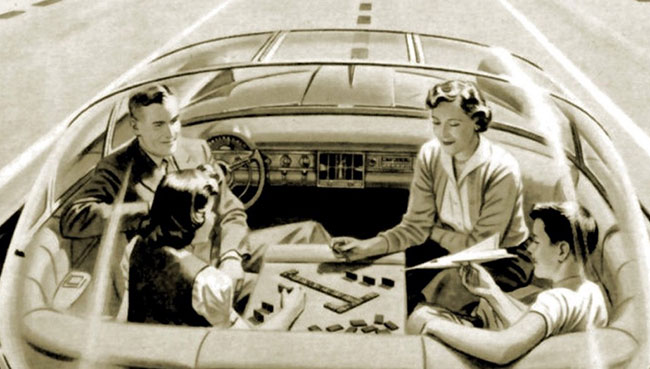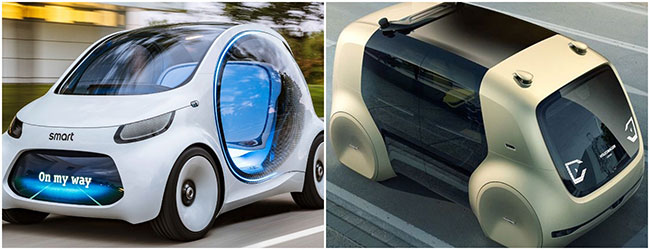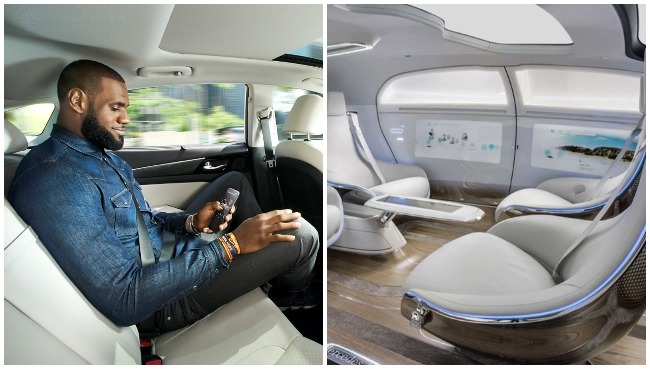We are in an era of incredible digital transformation and change. There’s no better example of this than autonomous cars.

Accelerating, braking, steering, navigating, following the road rules, adjusting to varying weather conditions and avoiding pedestrians.
All of these things are currently done manually by you, the driver. But not for long!
By 2021, autonomous cars will be available for sales to the public and will be on our roads.
So how do we make sure this future is a safe one? It may be annoying when your laptop crashes, but if your car "blue screens" while cruising at 100km/h, the results can be catastrophic. Add a layer of privacy and security concerns and you can understand why software quality is of utmost concern as we fast approach mainstream adoption.
Top Gear Australia host, Steve Pizzati, discussed these challenges with autonomous cars at this year’s Gartner Symposium/ITxpo on the Gold Coast.

Current autonomous concept cars may still look more like their manually driven counterparts, but we aren’t far away from what was imagined back in the 1950’s.
Today, autonomous vehicles are already in use, particularly within industries such as mining and agriculture. On our roads, it is estimated that there are already over two million cars with self-driving features globally. By 2020, this number is expected to hit ten million.
Form and function

As illustrated above, there are five levels to an autonomous car.
Most people have what is called a level 1 car, but more are starting to have level 2 vehicles which have radar-assisted cruise control or lane assist. It’s at level 3 when things become interesting.
One of the challenges with autonomous driving is that it requires a lot of sensors for the on-board computer to know what is happening around the vehicle. Although these sensors can look bulky on some prototype cars spotted in the wild, they will continue to be miniaturised before the mainstream launch in 2021.
Apparently, these sensors are expected to reach resolutions of 1mm. There’s even talk that they may be powerful enough to see through surrounding cars.

Design is important for the success a vehicle and this holds true for driverless cars. Auto manufacturer, Smart, has created some interesting concepts around its autonomous cars, though efforts by other companies can sometimes look like appliance.
While the exterior look of the autonomous car is important, the interior design is just as crucial. It will be interesting to see how the car industry will make use of the interior space once the driver is no longer required to sit in front of and hold a steering wheel.

Ongoing challenges
Beyond the technical challenges of the autonomous cars themselves, there is the infrastructure requirements to consider. Namely, the connectivity along roads to provide vehicles with sensory input into road conditions and on-road behaviour by other cars.
It’s great when autonomous vehicles drive on roads without incident. But if a vehicle happens to hit someone, who is responsible? Is it the driver or the manufacturer?
Do ethics need to be embedded? We have seen somewhat amusing research into how human drivers will react in an emergency situation – what they are more or less likely to hit with their car. Least likely to be spared is cats, followed by criminals (which includes jaywalkers), which seems to suggest that it doesn’t pay to be a criminal walking a cat.

With all of the connected technology found inside an autonomous vehicle, cybersecurity is now a critical consideration for cars. Chrysler found this out first hand when it was forced to recall 1.4 million vehicles after hackers were able to remotely hijack a Jeep's digital systems over the Internet.
Incidents like this have forced auto manufacturers to reconsider the extent they connect a car to networks and the Internet. Key functions of the car, such as accelerating and braking, are typically separate from any Internet-connected elements to mitigate the risk of being compromised by a hacker.

An automatic future
There’s no shortage of ideas and creativity when it comes to autonomous cars, particularly by the auto industry, which has been trying make it a reality for several decades. Even now in the 21st century it remains a challenge, but the auto industry has already taken its first steps into making this happen.
The first wave of autonomous cars for public sale are expected to appear by 2021. When they do, we can expect some significant changes in automotive habits.
For one, your kids won’t likely need a license. When you consider that a third of Londoners under 30 don’t have a driver’s license and have no intention of getting one, autonomous cars can’t come soon enough for some people.
Autonomous cars are just one example of digital transformation. We are all trying to automate and streamline so many of our existing processes, to the point where many of us are looking to implement AI and Machine Learning to provide a better customer experience.
Just like with a digital driver in your autonomous car, quality is a key attribute of your digital transformation. However, it’s important that quality doesn’t come at the cost of speed.
At Planit, we can help you to accelerate quality within your digital transformation. Contact us today to find out how we can assist with your digital transformation to better prepare your business and processes for the upcoming autonomous age.